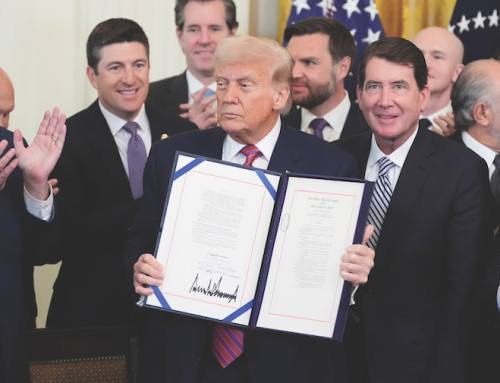OMAHA, Neb. (AP) — Union Pacific and Norfolk Southern are in merger talks to create the largest railroad company in North America that would connect the East and West Coasts.
The merger discussions began during the first quarter of this year, according to a person familiar with the talks who isn’t authorized to discuss them publicly. It would combine the largest and smallest of the country’s six major freight railroad operators.
Both railroad firms declined to comment.
Within the industry there is widespread debate over whether such a merger would be approved by the Surface Transportation Board even though those regulators approved the deal that created CPKC railroad company two years ago with the Canadian Pacific’s $31 billion acquisition of Kansas City Southern railroad firm.
That merger combined the two smallest major railroad operators in North America and left only six major freight railroads, but it was the first major rail merger approved in more than two decades.
The bar for railroad company mergers was raised substantially at the start of the century after a combination of Union Pacific and Southern Pacific in 1996 that snarled rail traffic for an extended period, followed by the 1999 split of Conrail between Norfolk Southern and CSX, which created backups in the East.
To be approved, any major rail company merger must show it will enhance competition and serve the public interest under the 2001 rules.
The CPKC merger was not judged under those rules because Kansas City Southern had an exemption from them as the smallest major freight railroad firm at the time.
Union Pacific CEO Jim Vena talked earlier this year about the potential benefits of such a merger because it would streamline deliveries across the country by eliminating the delays that come along with one railroad operator handing shipments over to another.
It would also simplify shipping for the companies that rely on railroad firms to deliver their raw materials and finished products.
In the past, however, some shippers have raised concerns about the consequences of being left with even fewer options to ship their goods because the major railroad operators are already so powerful.
Some investors have long argued that the industry should eventually consolidate down to two East-West railroad companies crossing the country alongside the two railroad operators that already cross Canada, but regulators have been skeptical and taken a cautious approach.
Any proposed deal would face a lengthy STB review.
Citi Research analyst Ariel Rosa said in a research note that a major transcontinental railroad company merger “would likely prove costly and time consuming, risking a years-long distraction to management, while facing significant pushback from regulators, politicians, employee unions, competitors, customers and other stakeholders.”









